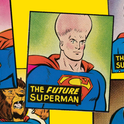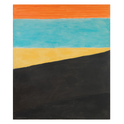(Picador, £16.99)
Walter Pater claimed that all art aspires to the condition of music, but John Banville's later novels aspire to the condition of painting. The Untouchable is a playful version of the life of the art historian and spy Anthony Blunt. In The Book of Evidence, the narrator Freddie Montgomery becomes obsessed with an old Dutch portrait of a woman, and in a botched attempt to steal it murders a chambermaid. In Ghosts, the same narrator serves as amanuensis to an art scholar and spends his time "with my catalogues and my detailed reproductions, polishing my galant style." The narrative of Athena is wrapped around a series of fake paintings by fake artists with names like Jean Vaublin, Johann Livelb, Giovanni Belli and LE van Ohlbijn—all synonyms or anagrams, more or less, of John Banville. In his new novel, The Sea, the narrator is a sixtysomething art historian, Max Morden, who is writing, or more to the point not writing, a "Big Book on Bonnard." His daughter, continuing the self-referential joke, has abandoned her studies on "Vaublin and the fête galante style."

Beyond this affinity between painting and memory, though, there is a sense in which Banville uses visual art to escape from the whole business of being an Irish writer. It is part of his strategy for, in the words of James Joyce's Stephen Daedalus in A Portrait of the Artist as a Young Man, flying by the nets of nationality, language and religion. Banville, who was born in Wexford in 1945, found his voice as a writer in 1970, just at the time when the resurgence of the Troubles recreated some of the pressures that Joyce had resisted—the pressure to be engaged, to be easily read, to serve the cause, to mean something. It is the pressure that has Seamus Heaney, for example, accuse himself in his poem "Station Island" of having "confused evasion with artistic tact," and seeking absolution from Joyce who assures him that "You lose more of yourself than you redeem/ doing the decent thing."
Banville seeks no absolution because he seems never to have been tempted to do the decent thing. It is not accidental that his first successful work, the 1973 novel Birchwood is a wicked and often very funny parody of the quintessential Troubles genre, the big house novel of the decline of the Protestant ascendancy. It features an ancient grandmother, Granny Godkin, who explodes in an act of spontaneous combustion, "like the shamefaced departure of a ghost who no longer frightens. That tiresome clank of bones was no more to be heard in the hall, the wicked laughter on the landing was silenced." In Banville, the whole baroque caravan of Ireland's contested identities explodes like Granny Godkin. He has no desire to listen to the old crone's mad cackle or to hear that clank of bones.
Rather paradoxically, this very need to swerve away from Ireland's entanglements is what makes Banville so recognisably an Irish writer. He shares with many of his contemporaries Joyce's view of history as a nightmare from which he is trying to awake. What is particular about him is the radical nature of his avoidance strategy: the virtual denial of history altogether. The opening line of The Newton Letter is addressed to a woman called Cliona, but also to the muse of history: "Words fail me, Clio." His language does not respond to history's muse. Much of Banville's work can be described as biography without history, lives extracted from the social and temporal contexts in which they might seem to make sense. Again in The Sea, history is out of the question. Max, as a child, imagines that what is to come is just a return of what has gone before: "what I foresaw for the future was in fact, if fact comes into it, a picture of what could only be an imagined past." Banville's familiar tense is, as Max also notes, "the historic present" in which time does not really pass and past, present and future merge into each other.
Banville's constant use of painting as a correlative of writing is connected to this determination to escape time and meaning. It is dangerous to read authors from their characters, but Victor Maskell, the Blunt figure in The Untouchable, comes close to the bone of Banville's work when he defends his work on Poussin against Marxist critics who "spent their energies searching for the meaning of his work, for those occult formulas upon which he was supposed to have built his forms. The fact is, of course, there is no meaning. Significance, yes; affects; authority; mystery—magic if you wish—but no meaning. The figures in the Arcadia are not pointing to some fatuous parable about mortality and the soul and salvation; they simply are. Their meaning is that they are there. This is the fundamental fact of artistic creation, the putting in place of something where otherwise there would be nothing."
But if art is simply an alternative to there being nothing, then every stroke of the brush or of the pen is self-consciously etched on a blank canvas whose emptiness can never quite be filled. Nothingness, after all, is infinite and every something merely finite—whatever presence the artist can conjure will never occlude the larger sense of absence. And this, in a sense, is what Banville's books are about. Like Samuel Beckett, the only Irish writer whose influence on him competes with that of Vladimir Nabokov, his words move gingerly across a void of silence.
Again, he expresses this most directly through an analogy with painting. The best description of his work is that of his own narrator in Ghosts, writing about the invented painter Vaublin: "Throughout his work something is missing, something is deliberately not being said. Yet I think it is this very reticence that lends his pictures their peculiar power. He is the painter of absences, of endings. His scenes all seem to hover on the point of vanishing. How clear and yet far-off and evanescent everything is, as if seen by someone on his death-bed who has lifted himself up to the window at twilight to look out a last time on a world that he is losing."
This gets to the heart of Banville's own, much praised, prose style. For just as, when we look at a painting, we are always aware that it consists of thousands of painstaking marks on a blank canvas, Banville is one of the few writers who make us aware of the blank spaces on the page, the gaps and margins that remain from the time when there was nothing there. Again, it is no accident that his narrators are almost always writers who draw attention to the mechanics of the process of putting words on the page. In The Sea, Max even tells us about the pen he uses for the end of his narrative: "I am graving these words with it, it has a graceful action, smooth and swift with only the occasional blot." The notion that words are graven images, and the obvious analogy with painting, don't just mark Banville as a writer of the pre-computer age. They also describe the effect his style has on the reader, the way it draws attention to the contingency of linguistic invention and its angular relationship with reality. The words don't necessarily describe anything. They may be simply marks on the page.
This style is another way of escaping Irishness. Against the easy eloquence of most Irish writing, Banville has constructed a style that combines the sensuous beauty of language as a physical object with a painful, hesitant self-awareness that derives in part from Beckett's prose. Max, in The Sea, retreats in grief to the seaside village of his childhood and tries to reconstruct in memory the strange story of an odd family he met there. Like the Blunt figure in The Untouchable, he imagines himself as a spy, secretly watching others and reporting on them.
Yet even as his language calls up vivid realities from the dark of oblivion, Max worries and fusses over its adequacy and accuracy. When he uses the word "uncanny," for instance, he is awkwardly aware of its failure: "How is it that in childhood everything new that caught my interest had an aura of the uncanny, since according to all the authorities the uncanny is not some new thing but a thing known returning in a different form, become a revenant?" When he uses the word "plimsoll," he can't help remarking that it is "a word one does not hear any more." Max is even allowed a sly joke at his creator's expense, metaphorically rolling his eyes at Banville's fondness for obscure words exhumed from the dictionary (losel, haulms, velutinous): "I pictured her in bombazine, whatever that is…"
There are times in Banville's work when this self-parodying fugue on the arbitrariness of language becomes a mere postmodern game. The turn away from history can be a turn inwards, to a fabulous but cold world that exists merely from sentence to sentence. But in The Sea, as in Banville's best work, the linguistic inventiveness is at the service of a haunting emotion: in this case, grief. If his fictional artistic alter ego Jean Vaublin is "the painter of absences, of endings," those absences and endings are etched here into a simple and deeply affecting sense of loss. Max is, as he puts it late in the novel, "compiling a Book of the Dead," and all the familiar linguistic strategies are here deployed to underpin a quiet mourning for the fact that people, like works of art, emerge from nothing and, unlike them, return to it. The ingenious structures and the skilful plotting that satisfy what Max calls "the tale's demand for a neat closing twist" are there to catch the drifting vestiges of lost lives. In that, the anagram is unscrambled, and Jean Vaublin becomes again John Banville, doing what writing can do and painting cannot.











